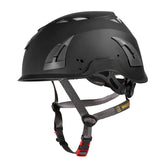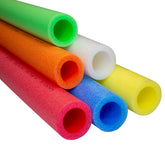Gloves. Whether you work in Construction, Scaffolding, Demolition or Oil & Gas, Safety Gloves are more than just something to keep our hands warm. These vital PPE items protect our hands from damage, enhance grip and make our daily lives easier.
But do we fully understand the required standards surrounding Safety Gloves? Does the mention of EN 388:2016 make your mind go blank?
At Leach’s, we are strong advocates for all job sites conforming to the latest safety standards and guidelines. We also understand that you would rather be working on site than reading long documents and attempting to translate them into useable information.
We have put together this simple, easy to understand guide to explain a key safety standard for gloves, EN 388:2016.
Those of us who have been working for several years will be used to hearing whether gloves are “Cut Level 2” or “Cut Level 1”. However, the way safety gloves are labelled has changed and it can be confusing when you see one of these new labels, such as “1524DP”.
In a hurry? Download our FREE Infographic for EN 388:2016 or watch the video at the bottom of this page.
EN 388:2016 - Protective Gloves Against Mechanical Risks
This updated safety standard centres around ensuring that the gloves we wear are rated in the below key areas:
- Abrasion Resistance
- Circular Blade Cut Resistance / COUP Test
- Tear Resistance
- Puncture Resistance
- Straight Blade Cut Resistance / TDM Test
- Impact Resistance
Each of those categories have a rating scale, which then makes up the safety label for gloves we wear. So, for the example we gave earlier, this how we would read the label:
Abrasion Resistance (Scale of 1-4)
The material for each glove is tested under pressure by sandpaper. This first category uses a scale of 1-4 to rate each safety glove, determined by the number of turns required until a hole appears in the material. The higher the number, the better it is at being abrasion resistant.
Circular Blade Cut Resistance / COUP Test (Scale of 1-5)
This rating is based on the number of cycles required to cut through the glove at a steady, constant speed. The higher the number, the longer it took for the blade to cut the material. If the blade gets dulled by the material, the TDM test (see below) will be done instead.
Tear Resistance (Scale of 1-4)
Each glove is tested by force to see how much is required to create a tear in the material. A rating of 4 indicates the gloves are made from the strongest material and will be the most resistance to tears.
Puncture Resistance (Scale of 1-4)
Using a standard size point, force is applied to the material to see how much is required for a puncture to occur. Gloves with a higher number indicate they are more resistant to punctures.
Straight Blade Cut Resistance / TDM Test (Scale of A-F)
This uses the ISO 13997 testing method. Using a straight blade, the rating is determined by the average load required to cut the material. Gloves rated ‘F’ shows that they required the greatest force of Newtons to cut through, resulting in a high grading. ‘A’ indicates the gloves have little cut resistance.
Impact Protection
This is an optional test and will only show if the gloves have impact protection (indicated by the ‘P’). If there is no sixth digit, then the gloves do not claim to have impact protection.
It is important to state that although many gloves still use the old ratings, they are still good to use. The performance of safety gloves has not changed, it is the method that is being used to test them that has changed.
It can be hard to remember all the new information, so to help, we have created this FREE printable Infographic to help provide a visual explanation.



















